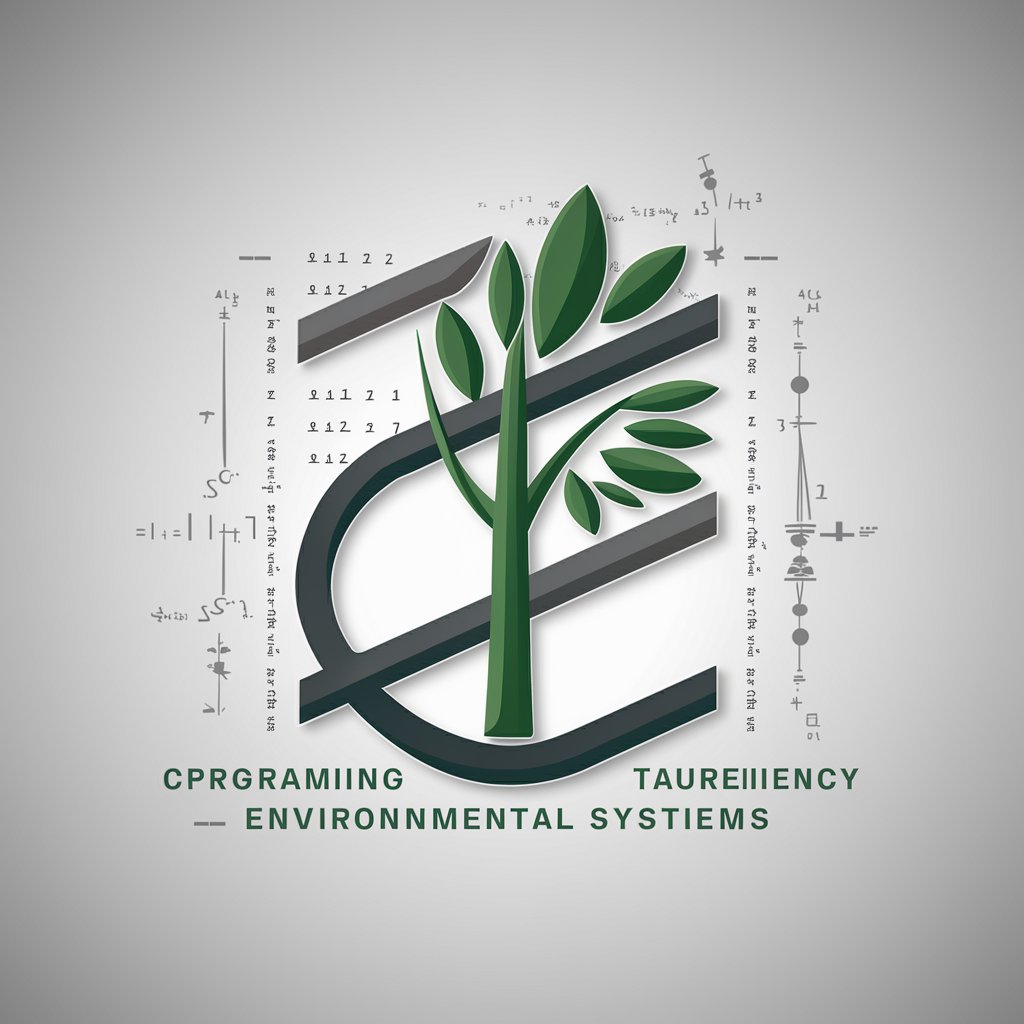Modeling with C: Unveiling Complex Systems - C-based System Modeling

Welcome! Let's dive into advanced C programming for complex simulations.
Harness AI to power complex C simulations.
How can I optimize my C code for...
What are the best practices for simulating...
Can you guide me through developing a model in C that...
What strategies should I use for efficient memory management in...
Get Embed Code
Introduction to Modeling with C: Unveiling Complex Systems
Modeling with C: Unveiling Complex Systems is a specialized approach focused on the development of simulation models using the C programming language to replicate and analyze complex real-world systems and phenomena. This approach is characterized by its emphasis on efficiency, accuracy, and scalability, making it particularly suitable for simulations that require high computational performance. Examples of its application range from environmental system simulations, like climate modeling and pollution spread, to theoretical physics, including quantum mechanics simulations and galaxy formation. The purpose is not only to predict outcomes and behaviors within these systems but also to provide insights that can guide decision-making and theoretical developments. For instance, a climate model developed using this approach could simulate decades of weather patterns in a matter of hours, offering valuable data for climate change research. Powered by ChatGPT-4o。

Main Functions of Modeling with C: Unveiling Complex Systems
Efficient Data Processing and Simulation
Example
Simulating the impact of deforestation on local climates.
Scenario
Using C's performance efficiency, the system can process vast amounts of environmental data to simulate years of climate changes, allowing researchers to understand potential long-term impacts of deforestation.
Scalable Model Development
Example
Modeling the spread of infectious diseases in varying population densities.
Scenario
Leveraging C's scalability, the model can simulate disease spread in populations ranging from small communities to entire countries, adjusting parameters to study different public health strategies.
High Precision Computational Physics
Example
Calculating quantum mechanical properties of materials.
Scenario
By exploiting C's ability to handle complex mathematical operations efficiently, the system can provide precise calculations of quantum states in materials, aiding in the development of new technologies.
Ideal Users of Modeling with C: Unveiling Complex Systems Services
Research Scientists
Scientists engaged in cutting-edge research across various domains such as environmental science, physics, and epidemiology. They benefit from precise, scalable, and efficient simulation models to advance their research.
Environmental Consultants
Professionals who require accurate simulations of environmental impacts for projects or policy development. They rely on detailed models to predict changes and propose sustainable solutions.
Data Analysts in Theoretical Physics
Analysts who specialize in interpreting complex datasets related to physical phenomena. They use these models to validate theoretical predictions with practical data, bridging gaps in understanding.

How to Use Modeling with C: Unveiling Complex Systems
1
Begin by visiting a platform offering a no-cost trial without the necessity for login credentials, also eliminating the need for a premium subscription.
2
Choose a simulation domain of interest, such as environmental systems or theoretical physics, to focus your modeling efforts.
3
Download the provided C code templates relevant to your selected domain. Review the documentation for understanding the structure and customization options.
4
Utilize the detailed guidelines to modify and extend the C code templates for your specific simulation needs. Pay attention to efficiency, accuracy, and scalability.
5
Run simulations using your modified code. Utilize the debugging and optimization tips provided to refine your model for enhanced performance and accuracy.
Try other advanced and practical GPTs
🛫 High-Integrity System
Elevating Air Traffic Safety with AI

Linux Terminal Explainer
Empowering your Linux journey with AI.

What If?
Crafting Alternate Realities with AI

JavaScript WebSocket Wizardry: Real-Time Mastery
Empowering real-time connections with AI-driven WebSocket management.

🚀 Ada Real-Time Control Systems
Empower Real-Time Systems with AI

Community Tab Schedule Planner
Automate engaging community posts with AI

Kotlin Inline Classes: Elevate Your Code
Optimize Kotlin code with AI-powered inline classes.

🎯 Mastering Elm's 'Task' Type
Unlocking asynchronous power in Elm

Ask Fulcra (experimental)
Unlock Your Life's Data with AI

AI Exam Helper
AI-powered question generation and study tool

Math Formal Proof Assistant
Elevating proof development with AI

WordWorker.ai
Empowering Language Mastery with AI

FAQs on Modeling with C: Unveiling Complex Systems
What makes C programming suitable for complex system modeling?
C programming offers low-level control over system resources, enabling the efficient handling of computations and memory management crucial for modeling complex systems. Its speed and flexibility allow for detailed simulations of various domains with high accuracy.
Can I use this tool for environmental system simulations?
Absolutely. This tool is designed to support a wide range of simulation domains, including environmental systems. You can model phenomena such as climate change, ecosystem dynamics, and pollution dispersion, benefiting from C's computational efficiency.
How does parallel processing enhance my simulations?
Parallel processing allows your simulations to run computations simultaneously across multiple processors. This significantly speeds up the simulation process, especially for complex models or large datasets, making it feasible to explore more sophisticated scenarios within reasonable time frames.
What are some best practices for optimizing C code in simulations?
Best practices include using efficient algorithms, minimizing memory usage, leveraging compiler optimizations, and employing parallel processing techniques. Regularly profiling your code to identify bottlenecks and applying targeted optimizations can also greatly improve performance.
How can I ensure the accuracy of my simulations?
Ensuring simulation accuracy involves validating your models against known results or empirical data, using precise numerical methods, and rigorously testing your code for different scenarios. Continuous refinement and validation against real-world data are key to maintaining accuracy.
